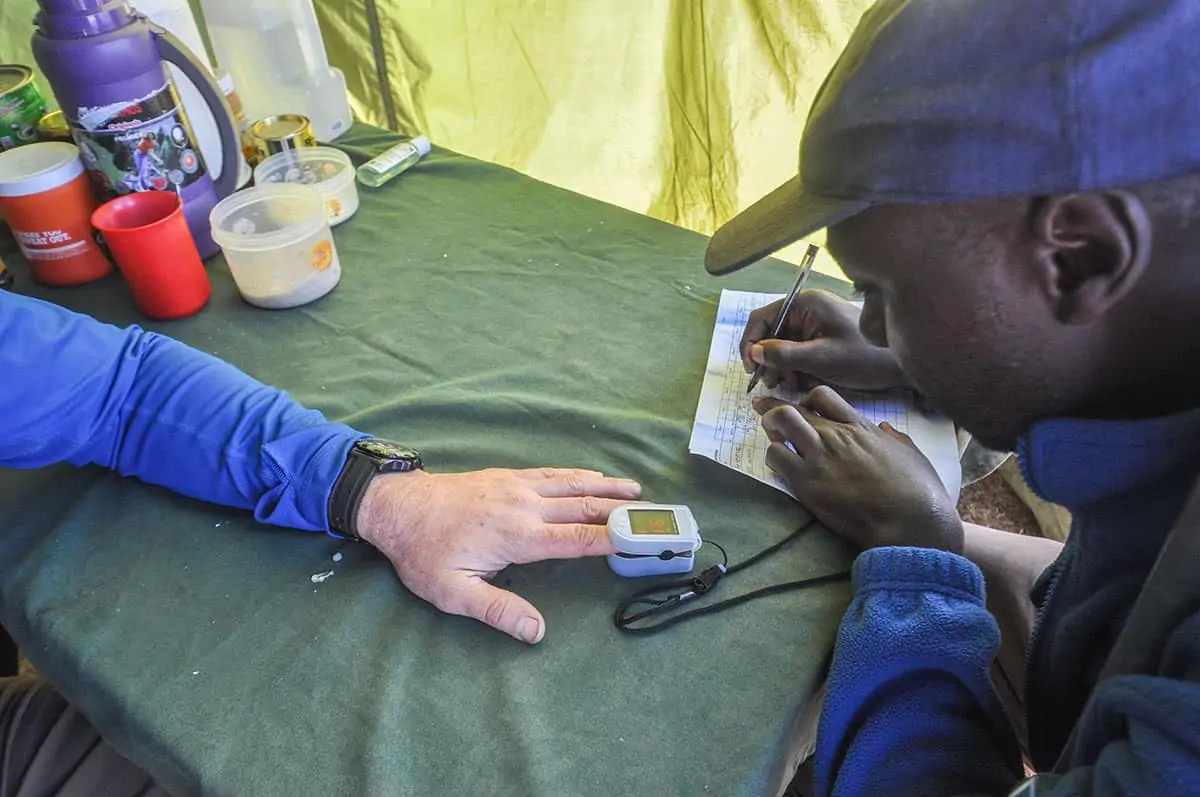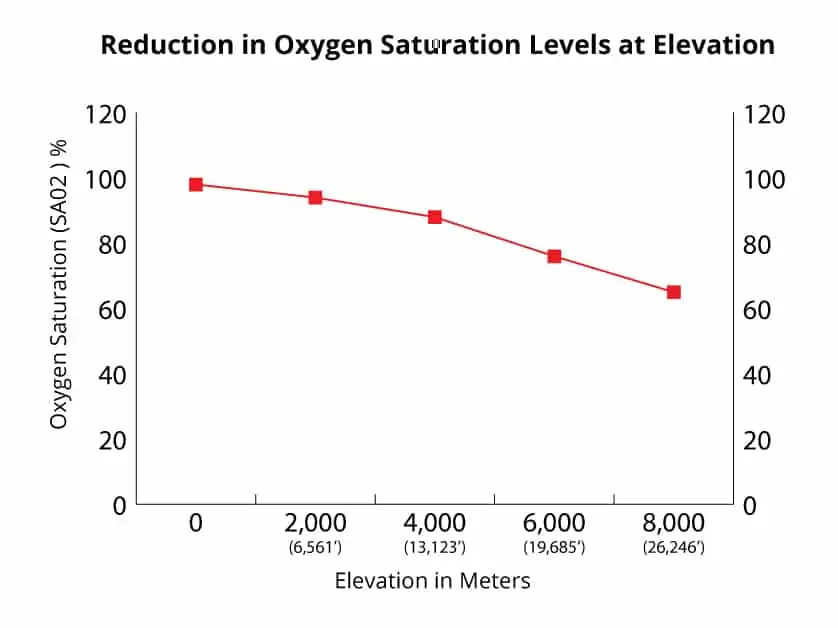 One of the benefits of climbing with Peak Planet is that we provide pulse oximeters or PulseOx to our guides. What is a pulse oximeter? A pulse oximeter is a noninvasive method for monitoring a person’s oxygen saturation (SO2). This is very important when ascending to high altitudes. It helps our guides have a baseline to work from to make sure our clients are safe on the mountain. We monitor your pulse and blood oxygen levels every morning and evening while on the mountain.
One of the benefits of climbing with Peak Planet is that we provide pulse oximeters or PulseOx to our guides. What is a pulse oximeter? A pulse oximeter is a noninvasive method for monitoring a person’s oxygen saturation (SO2). This is very important when ascending to high altitudes. It helps our guides have a baseline to work from to make sure our clients are safe on the mountain. We monitor your pulse and blood oxygen levels every morning and evening while on the mountain.
How does a Pulse Oximeter work?
The device is placed on a fingertip. The device passes two wavelengths of light through the body part to a photodetector. It measures the changing absorbance at each of the wavelengths, allowing it to determine the absorbances due to the pulsing arterial blood alone. This excludes venous blood, skin, bone, muscle, fat, and (in most cases) nail polish.
Why is a Pulse Oximeter Important?
The body deals with this decrease in available oxygen by breathing faster and deeper (even at rest) to increase the oxygen content in the blood (i.e. blood oxygen saturation or SO2).
The chart to the right shows the typical profile of oxygen saturation in an average person’s blood as one ascends to higher altitudes. For the average person, you can see that blood oxygen saturation (SO2) decreases to nearly 80% at 6,000m (just above Kilimanjaro’s summit).
The optimal oxygen saturation of the blood lies between 95 and 98 percent. This value corresponds to the percentage of haemoglobin molecules which transport oxygen in proportion to the total number of haemoglobin molecules.
In conclusion, we use the pulse oximeters to recognize early signs of impending altitude sickness. We are one of the few companies that use the pulse oximeter. We want you to summit Mt. Kilimanjaro as safely as possible. You can read more about our safety here: http://peakplanet.com/climb-information/safety-and-rescue/



